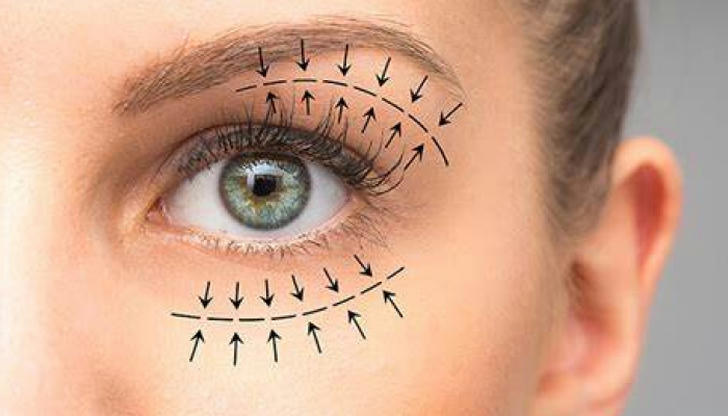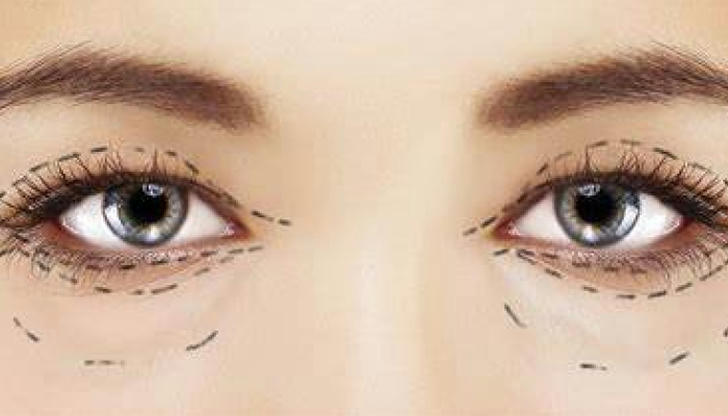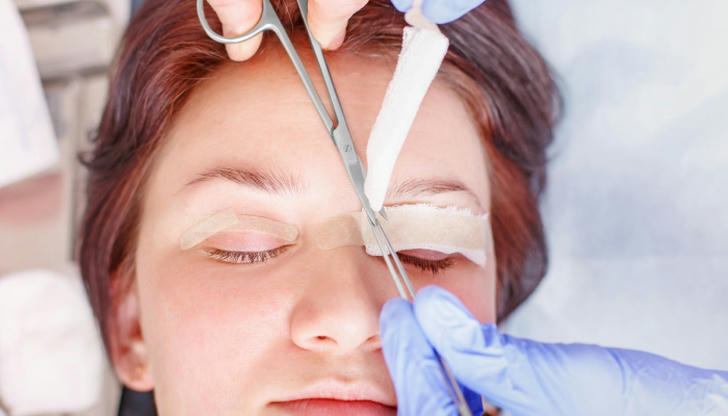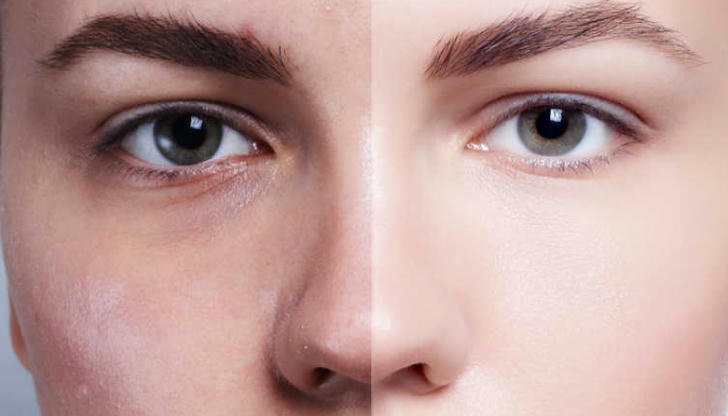Blepharoplasty: An In-Depth Exploration of Benefits, Risks, and Considerations

Blepharoplasty, commonly referred to as eyelid surgery, is a popular cosmetic procedure designed to improve the appearance of the eyelids by removing excess skin, fat, and muscle. This surgery can be performed on both the upper and lower eyelids, addressing issues like drooping eyelids, under-eye bags, and puffiness. For many, blepharoplasty offers not only an opportunity to enhance their facial aesthetics but also functional improvements in vision, particularly in cases where sagging eyelids impede the line of sight. As with any surgical intervention, blepharoplasty carries certain risks, and it is crucial for patients to fully understand the procedure, its benefits, and potential complications before making a decision. This article provides an in-depth exploration of blepharoplasty, covering its techniques, benefits, risks, recovery process, and ethical considerations. By examining these aspects, we can gain a better understanding of how this procedure contributes to both the aesthetic and functional aspects of facial rejuvenation.
Understanding Blepharoplasty
Blepharoplasty is a surgical procedure aimed at removing excess skin, muscle, and fat from the upper and/or lower eyelids. The goal is to achieve a more youthful and rested appearance by eliminating drooping or puffiness around the eyes. This procedure is popular among individuals who want to address aesthetic concerns, as well as those who experience functional issues due to sagging eyelids. Blepharoplasty can be categorized into two main types: •Upper Blepharoplasty: This procedure focuses on the upper eyelids, where excess skin or fat can cause a tired or aged appearance. In some cases, excessive skin can even obstruct vision. The surgery involves making small incisions along the natural folds of the eyelid to remove excess tissue and tighten the skin. This results in a more youthful, alert appearance and may improve peripheral vision.
•Lower Blepharoplasty: This procedure targets the lower eyelids, addressing concerns such as under-eye bags, puffiness, and fine lines. The surgery involves removing or repositioning fat from the lower eyelid area, and in some cases, tightening the skin for smoother results. Lower blepharoplasty can improve the appearance of the undereye area, making the face look fresher and more rejuvenated.
•In some cases, blepharoplasty is combined with other facial surgeries such as facelifts, brow lifts, or laser skin resurfacing to achieve comprehensive rejuvenation.
Benefits of Blepharoplasty

Blepharoplasty offers a range of aesthetic and functional benefits. These advantages are often what motivate individuals to seek out the procedure. Here are some of the key benefits:
- Improved Appearance The primary benefit of blepharoplasty is an enhanced appearance. By removing excess skin, fat, and muscle from the eyelids, patients often experience a more youthful, rested, and alert look. The procedure can help correct drooping eyelids, which can make individuals appear tired or older than their actual age. It can also reduce puffiness under the eyes, which is often associated with aging or genetics.
- Enhanced Vision In some cases, sagging eyelids may obstruct a person’s field of vision, particularly the peripheral vision. Upper blepharoplasty can be performed to address this issue, especially in patients whose eyelid sagging is severe enough to affect their daily activities, such as driving or reading. By removing the excess skin and tightening the eyelid, blepharoplasty can help restore lost vision and improve the patient’s overall quality of life.
- Long-lasting Results One of the key advantages of blepharoplasty is that the results tend to be long-lasting. The effects of the procedure can last for several years, with many patients enjoying their rejuvenated appearance for up to 10 years or longer. Although the aging process continues after the surgery, the improvements achieved through blepharoplasty are typically permanent.
- Boosted Self-confidence For many patients, blepharoplasty is not just about improving their physical appearance but also about boosting their self-confidence. The cosmetic benefits of the surgery can lead to an improved self-image and greater confidence in social, professional, and personal situations. Feeling good about one's appearance often has a positive impact on emotional well-being, making blepharoplasty a life-changing procedure for many.
- Minimal Scarring Since blepharoplasty incisions are typically made along the natural creases of the eyelids, scarring is minimal and usually well-concealed. In the case of lower blepharoplasty, the incisions are often made inside the lower eyelid, so there is no visible scarring at all. When performed by a skilled and experienced surgeon, the results are often discreet, and scars are barely noticeable.
Risks and Complications
Like all surgeries, blepharoplasty carries certain risks and potential complications. It is crucial for patients to be aware of these risks and discuss them with their surgeon before proceeding with the procedure. Some of the common risks and complications include:
- Infection As with any surgical procedure, infection is a potential risk following blepharoplasty. Proper aftercare and adherence to post-surgical instructions can help reduce the risk of infection. Infections can lead to complications such as delayed healing, scarring, or changes in the appearance of the eyelids.
- Dry Eyes or Irritation After blepharoplasty, some patients may experience dryness or irritation in their eyes. This can be temporary and is typically managed with lubricating eye drops. In rare cases, however, persistent dryness may occur, requiring additional treatment. It is important for patients to follow their surgeon’s post-operative care recommendations to avoid such issues.
- Hematoma and Bruising Hematomas (blood collections under the skin) and bruising are common after eyelid surgery. These conditions are generally temporary and should resolve within a few weeks. However, excessive bruising or swelling may require medical attention if it does not improve with time.
- Scarring Although blepharoplasty incisions are typically hidden in the natural folds of the eyelids, there is still a risk of visible scarring. In some cases, the scars may become raised, thickened, or discolored. Proper incision care, including the use of scar-healing treatments, can help minimize the risk of noticeable scarring.
- Asymmetry or Unfavorable Results While blepharoplasty is designed to create more balanced and symmetrical eyelids, there is a possibility of asymmetry or suboptimal results. In some cases, patients may require revision surgery to correct any imperfections. Choosing an experienced and skilled surgeon can significantly reduce the likelihood of this occurring.
- Vision Problems Although rare, some patients may experience temporary vision issues following blepharoplasty, such as blurred vision or sensitivity to light. These side effects are typically short-lived but should be discussed with the surgeon if they persist.
Recovery Process

The recovery process following blepharoplasty varies from patient to patient but generally involves a few weeks of downtime. The following are some typical aspects of the recovery period:
- Initial Healing Period In the first few days following the surgery, patients can expect swelling, bruising, and mild discomfort. Ice packs and over-the-counter pain relievers are often used to manage these symptoms. Most individuals can return to work and daily activities within 7 to 10 days, though they may need to avoid strenuous physical activities for several weeks.
- Follow-up Appointments After the procedure, patients will have follow-up appointments with their surgeon to ensure that the healing process is progressing well. During these visits, the surgeon will check for any signs of complications and remove any stitches that may be necessary.
- Long-Term Recovery While the initial healing phase may take 1 to 2 weeks, full recovery from blepharoplasty can take 6 to 8 weeks, during which time any residual swelling or bruising should subside. Patients are typically advised to avoid excessive sun exposure and strenuous activities during this period to support proper healing.
Ethical Considerations
As with any cosmetic surgery, blepharoplasty raises ethical concerns. These issues often revolve around the motivations behind seeking the procedure and the potential psychological impact on patients. Here are a few ethical considerations:
- Psychological Impact For many individuals, blepharoplasty is sought to improve self-esteem and address issues related to aging. However, patients with unrealistic expectations or those with underlying psychological conditions, such as body dysmorphic disorder (BDD), may be prone to dissatisfaction with the results. It is important for surgeons to screen patients thoroughly and ensure that they have realistic expectations about the outcome of the surgery.
- Overuse of Cosmetic Surgery In an era where societal beauty standards are often tied to youthfulness and perfection, some people may seek repeated cosmetic procedures in an attempt to achieve an idealized version of beauty. Surgeons must be mindful of these societal pressures and ensure that their patients are pursuing surgery for the right reasons—primarily to improve their well-being rather than to meet external standards of beauty.
- Access and Inequality Cosmetic surgery, including blepharoplasty, remains largely accessible to those with significant financial resources. This raises concerns about accessibility and the implications of cosmetic surgery becoming a privilege for the wealthy. The growing demand for aesthetic procedures highlights the need for ethical discussions around the commercialization of beauty and body modification.

Conclusion
Blepharoplasty is a widely practiced and effective cosmetic procedure that offers both aesthetic and functional benefits for patients. Whether addressing drooping eyelids, puffiness, or vision obstruction, the surgery can improve one’s appearance and enhance quality of life. However, as with any surgical procedure, it is important for individuals to weigh the benefits against the potential risks and complications. The key to a successful outcome lies in selecting a qualified and experienced surgeon, adhering to post-operative care instructions, and ensuring that the decision to undergo surgery is driven by realistic expectations and healthy motivations. As cosmetic surgery continues to evolve, blepharoplasty remains a safe and transformative option for those seeking rejuvenation, but it must be approached with caution and responsibility to ensure the best possible results for each patient.
